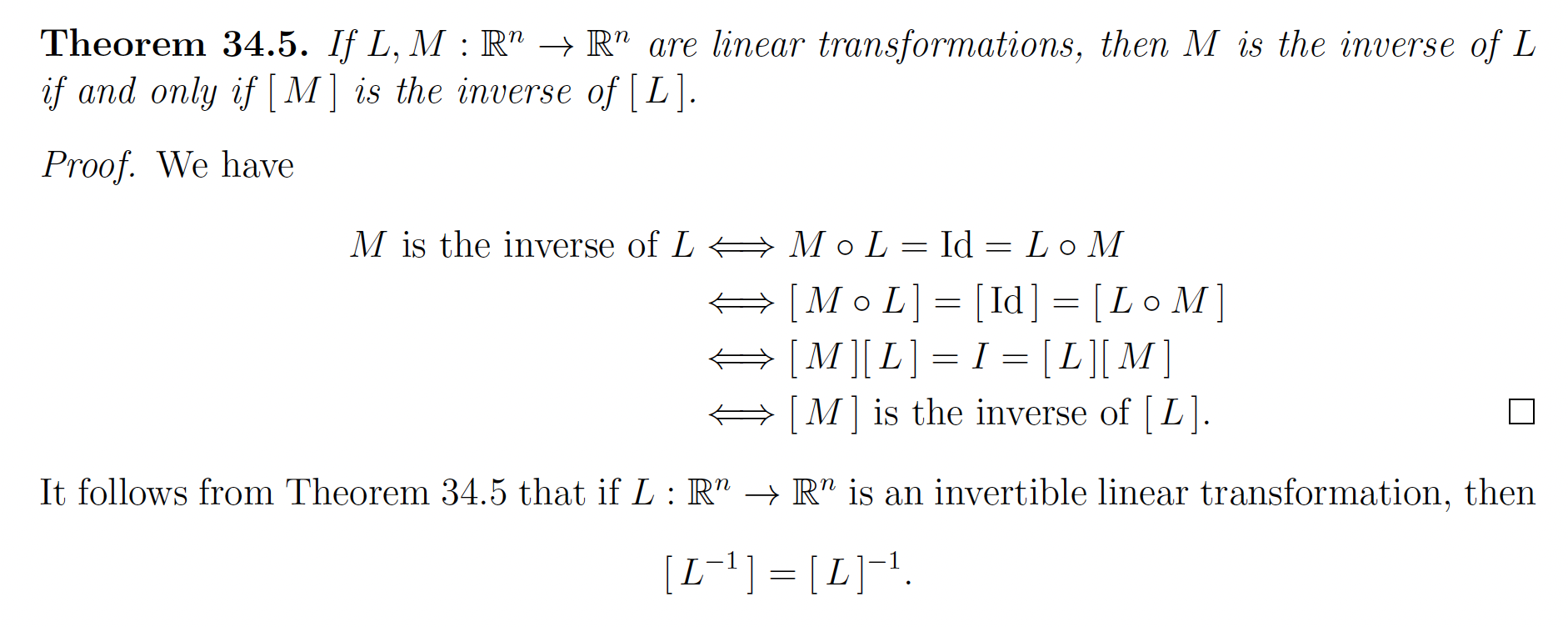Linear Transformation
This has extremely important applications for Robotics and Virtual Reality. Used for Rigid-Body Transformations
Notes from MATH115, Articulated Robotics, and Steven M. Lavalle’s VR lectures.
Think of linear transformations as just functions in higher dimensions, i.e. . We often represent them as a Matrix Transformation. For example, a 2D Linear Transformation:
Linear Transformation
A function is called a linear transformation if for every , and for every we have
Now, what’s super cool is that we can represent a linear transformation as a Matrix Transformation!
If is a linear transformation, then is a Matrix Transformation with corresponding matrix , i.e. for every . The matrix is given by
Proof is at page 201 of the pdf.
Some Properties
- 0 always maps to 0, i.e.
- Linear Transformations are always an Odd Function, i.e.
- You can do Composition of Function on Linear Transformation, where
- This is super useful, for example, when you apply multiple rotations, see Rotation Matrix
Inverse Linear Transformations
This is actually more important than I thought. For example, if you apply a rotation linear transformation, how do you undo that rotation?
- Answer: Represent linear transformation as Matrix Transformation, and get the inverse of the matrix. Proof at page 215

if is an invertible linear transformation, then
Kernel and Range of Linear Transformations
Given a linear transformation , there are two important sets that carry with them information about .
Kernel Definition: Let be a (linear) transformation. The kernel of is Note that . It is a subspace of it.
Range Definition: Let be a (linear) transformation. The range of is
Note that . It is a subspace of it.
Theorem 35.6. Let be a linear transformation with standard matrix . Then
One-to-One and Onto Linear Transformations
Wow, as I revisit these notes, This is Serendipity with the stuff I learned in SE212 about what Functions are.
If is a linear transformation, then is one-to-one if and only if .
Let be a linear transformation. Then L is one-to-one if and only if .
is a one-to-one correspondence if and only if is invertible.